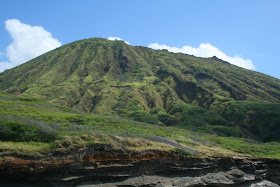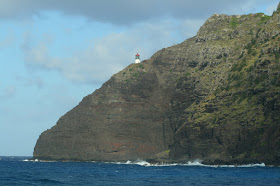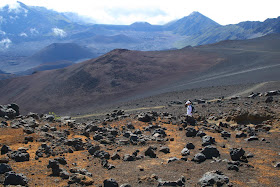Remarks Prepared for Delivery by Interior Secretary Ken Salazar
South Rim of the Grand Canyon, Arizona on June 20, 2011
Good morning everyone.
One hundred and forty-two years ago, John Wesley Powell and his crew became the first explorers ever known to successfully steer their way through the rocks and gorges, the rapids and whirlpools, of America's greatest natural wonder: the Grand Canyon.
Powell came here to read the story of our planet in the layers of the canyon walls. He came to study the forces that shaped this land, pebble after pebble, flood after flood, over 2 billion years.
To be here - for John Wesley Powell or for any of us - is to be overwhelmed and humbled by the scale of geologic time. The minutes, hours, and days by which we measure our lives are hardly an instant in the life of these canyons.
Yet, all of us - by the decisions we make in our short time here - can alter the grandeur of this place.
Our ancestors understood this. Time and again, people like John Wesley Powell, Theodore Roosevelt, and Stephen Mather (for which this point is named), helped us choose the protection of the ancient over the pressures of the now.
As Teddy Roosevelt famously implored from this very place: “Leave it as it is. You cannot improve on it. The ages have been at work on it, and man can only mar it."
That courage... that wisdom... that patience... is why we have Grand Canyon National Park, iconic places like Yosemite and Yellowstone, and wild and untrammeled forests and public lands for all Americans to enjoy and explore.
Our ancestors could not have known that one day the Grand Canyon would attract more than 4 million visitors a year. That hunting, fishing, tourism, and outdoor recreation would generate an estimated $3.5 billion in economic activity in this area. Or that millions of Americans living in cities like Phoenix and Los Angeles would rely on this river and this canyon for clean, healthy drinking water.
And many Tribes in the area see their history and culture woven throughout the Grand Canyon’s landscape.
Like our ancestors, we do not know how future Americans will enjoy, experience, and benefit from this place. And that's one of the many reasons why wisdom, caution, and science should guide our protection of the Grand Canyon.
In this moment, we face a choice that could profoundly affect the Grand Canyon in ways we do not yet understand.
Some of the lands near the Grand Canyon contain uranium resources that have helped meet our energy needs. Over the past 20 years, eight uranium mines have operated in the area and one study has shown that a possible additional eight to eleven mines might be developed in the area.
The question for us, though, is not whether to stop cautious and moderate uranium development, but whether to allow further expansion of uranium mining in the area.
The Bureau of Land Management, under the leadership of Director Bob Abbey, has been carefully studying this question since July, 2009, when I initiated a two-year closure of the area to new uranium mining claims.
BLM, in coordination with other agencies, the States, Counties, Tribes, and other partners published a draft environmental impact statement that examined whether to implement a twenty year mineral withdrawal, subject to valid existing rights, for certain areas around the Grand Canyon.
The options they considered were no withdrawal (which would allow new hard rock mining claims to be filed), a partial withdrawal of approximately 300,000 acres, a partial withdrawal of 650,000 acres, and a full withdrawal of approximately 1 million acres.
The BLM received nearly 300,000 comments on this draft environmental impact statement. The time has now come to respond to those comments and identify a "preferred alternative" for a final environmental impact statement that the agency will complete by this fall.
Based on the analysis that has been done and the public comments that have been received, in particular - many of the water quality concerns raised by downstream water users, I am directing two steps today.
First, I am ordering a temporary emergency withdrawal - through December 20, 2011 - of the full one million acres we are studying for the potential long-term withdrawal, subject to valid existing rights. This emergency six-month withdrawal will ensure that no new mining claims can be filed after the current two-year segregation expires on July 20th.
Second, based on the input of BLM Director Bob Abbey, National Park Service Director Jon Jarvis, USGS Director Marcia McNutt, and the United States Forest Service Chief Tom Tidwell, I am directing the BLM to identify the full one million acre uranium withdrawal as the preferred alternative in the final EIS.
This alternative, if ultimately selected, would ensure that all public lands adjacent to Grand Canyon National Park are protected from new hard rock mining claims, all of which are in the watershed of the Grand Canyon.
This remains an ongoing process. Based on this direction, BLM will complete the environmental analysis of the preferred alternative and other alternatives and publish a final environmental impact statement by fall 2011. I will then be ready to make a final decision on the potential 20-year mineral withdrawal.
Finally, before I turn it over to Bob, I want to make a couple of things clear.
First, I know some critics will falsely claim that with a full one-million acre withdrawal from new hard rock mining claims, we would somehow be denying all access to uranium resources.
That, of course, is not true. Uranium, like oil and gas, solar, wind, geothermal, and other sources, remains a vital component of a responsible and comprehensive energy strategy. We will continue to develop uranium in northern Arizona, Wyoming and other places across the country.
It is worth stating again that we believe there are likely a number of valid existing rights in the proposed withdrawal area even if the preferred alternative is ultimately selected as the final decision. We expect continued development of those claims and the establishment of new mines over the next twenty years.
In fact, cautious development with strong oversight could help us answer critical questions about water quality and environmental impacts of uranium mining in the area. This science, derived from experience, would help others decide what actions are necessary to protect the Grand Canyon.
Second, as we move through the final analysis toward a decision, let us all be reminded of what these canyons can teach us.
It is what John Wesley Powell and his crew experienced here as they risked their lives more than a century ago.
And it's what families sense when they stand on this rim: that our lives are fleeting instants when measured against the geologic time and forces that forged this canyon.
But our decisions - our actions - can alter billions of years of history in all its wonder and glory.
Let us be cautious. Let us be patient. Let us be humble.
###
In this country, the 1872 Mining Law still determines how our public lands are to be mined. Mining interests have worked diligently to insure that this law remains on the books, in spite of scientific advancements since 1872 that can show us which lands are suitable for development and which ones are not.
There is only one Grand Canyon. Let us be cautious. Let us be patient. Let us be humble.













































